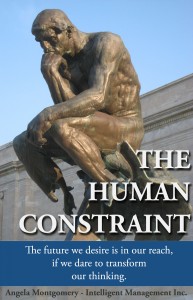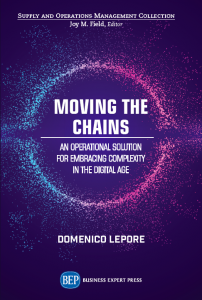
When it comes to change, we find ourselves in a fundamental conflict.
On the one hand, we don’t want to change because we want to protect a deep need for “control”. On the other hand, we want to change because we want to protect a deep need connected with “vision” or growth. Both needs are connected to a goal about a more desirable future. We get “stuck” in this conflict and are unable to decide and take actions because of the assumptions or mental models that keep us in a state of blockage.
Decision-making and where control and vision come into the picture
The need for control and the need for vision are common to individuals as well as organizations. As we are dealing with the cognition process and its impact on our lives, let’s concentrate on the very critical process of decision-making. The question is: how do control and vision translate in the decision-making process?
A decision point is where we are confronted with the possibility of change. Whether we are cognizant of it or not, everyday we take myriads of decisions and these decisions foreshadow in our mind a “change”. However, we truly feel the need to take a “life-changing” decision only when the current state of our reality shows some or many elements of discomfort. On the other hand, regardless of our current situation, our innate drive towards elevation and improvement will push us towards wanting to take life-changing decisions.
In this process, the need “control” takes the shape of “security” and this need leads to not making the change; “vision”, on the other hand, will be translated as “satisfaction” and will gear our decision towards making that change.
The decision process takes us then to a very precise and fundamental dilemma: Change vs. Do not change. This dilemma is originated by the two core needs of “control” and “vision” that in the decision process we can verbalize as “security” and “satisfaction”.
We can summarize this conflict in a diagram called the Conflict Cloud diagram. It is one of the Thinking Processes from the Theory of Constraints – see below. The box A contains the goal, B is a need that must be satisfied, and D is the conflicting position we assume in order to protect the need. C is the other need in this conflict, and D’ is the conflicting position we adopt to protect the need C. The blue boxes contain the assumptions or mental models that are the reasons why we have these needs and positions. The assumptions between D and D’ are the reasons for the two positions to be in conflict and they are what keep us stuck, unable to move forward. If we can challenge these assumptions, we can find a way forward to a breakthrough solution.

See the first post in this series on Change: Why Is Managing Change So Hard and How Can We Make it Easier?
Contact: intelligentmanagement@sechel.ws
SCHEDULE AN INTRODUCTORY CALL WITH US







Leave a Reply